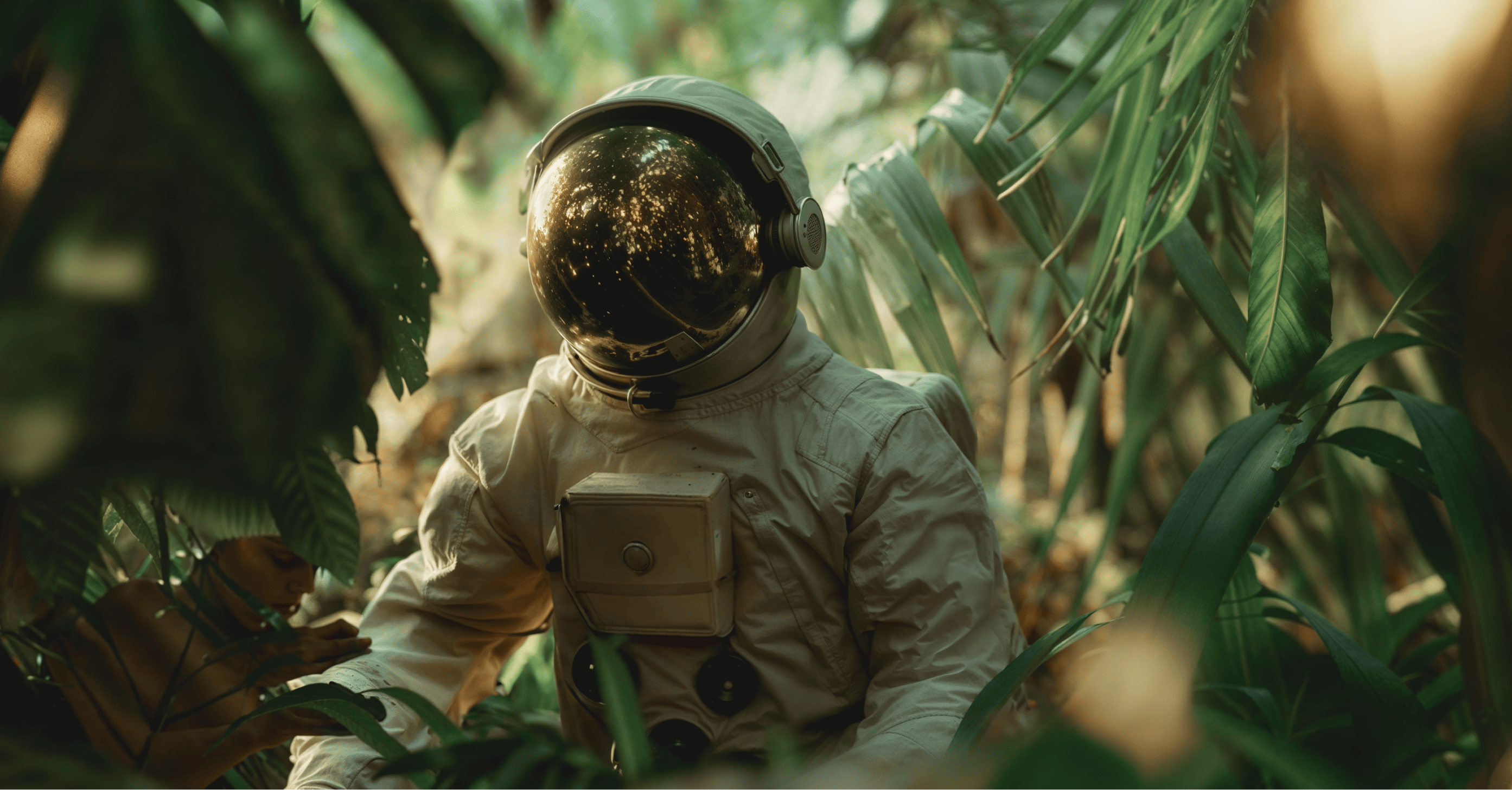Jason Henrickson Interview: How DesignOps Works at Amazon

Jason Henrickson, a creative operations manager at Amazon, has spent years at the online retail giant helping to streamline complicated creative projects and solve issues that allow design teams to scale. Now part of the team producing editorial photo shoots for the Amazon Home categories, Henrickson’s design operations (a.k.a. DesignOps) efforts helped his colleagues come in way under budget this past year.
We talked to Henrickson about the value of keeping your creative team happy, how DesignOps can help drive down costs and what it’s like to play the bad guy who’s really just trying to keep the team on track.
You work in creative ops at Amazon. What exactly does that mean?
It’s a DesignOps function: I'm here to take the stress off creatives and help them achieve their best work. Generally, that’s a combination of taking care of business — like contracts and budgeting — and taking care of people. Taking care of creatives is a special skill, because they can have a lot of passion and a lot of empathy which can also lead to a lot of drama.
Oof. How do you navigate the drama?
I try to keep the team positive by doing things to just generally uplift them. Things like trainings, team outings, personal advancement programs, mentoring, all of that type of stuff. It's really important for DesignOps to keep growing the team and to keep them feeling engaged. Ensuring your creatives feel valued is so important to maintaining consistency and growth in your design product.
Can you tell me a little bit about your experience getting started with DesignOps at Amazon?
I started out as a graphic designer so I came up in the world as a creative. But I had an opportunity to either be an art director or a design manager. I took the people manager route at Amazon and that's when I really saw a lot of need for these other operations-based things. I could still match the right people to the right job but if I also knew all of the projects coming down the pipeline, I could better manage their time and stress and forecast a little better. I developed a niche for myself on the first team I was on at Amazon and earned a reputation for doing what I do. Since then, I've moved from team to team solving problems, mostly around scaling design teams.
How has DesignOps helped smooth out processes for your team or for Amazon in general?
DesignOps has really helped improve our scaling ability by having someone who focuses on hiring and growing creative talent. I'd say that's probably the number one value it drives — the ability to scale quickly. Whether that's using internal resources, external resources or paid services — whatever we can find. It’s also helped to drive down costs: Having someone dedicated to fighting for the best prices from vendors really helps the team.
And that person is you?
Yeah! Typically that would be something that the creative director would do, but they’re usually just too busy to worry about it. So having someone focused on pricing really helps drive down the cost. There are other efficiencies we put in place too, like tools and services that are brought on to help the team with menial tasks so they can spend more time on the creative. That has an impact on our bottom line too. For instance, this year we came in way under budget. I'd definitely say that's due to DesignOps because I looked for ways to cut money throughout the year while still keeping the quality high.
Can you tell me a bit more about the team you’re working directly with?
We do editorial photo shoots for the Amazon Home categories. So if it's home goods, kitchen, tools, lawn and garden, we do the editorial photo shoots for all that stuff. Right now I have eight people on the creative team who work directly under me. I'm their ops manager, and they're my creative team, so they kind of all roll up to me. And then I partner up with a content manager who has another eight people. I think our full team is 37 in total.
How do you actually measure the ROI on the work that you're doing with DesignOps?
It all starts with having a baseline of what you're trying to improve. When I first started in this current role, they had no budget, no ticketing system. They were literally handing design tickets off on Post-it Notes. So I set up a budget and tracked it for a year. Next, I implemented a ticket system so we could keep all communication between the creatives and stakeholders in one place and set up a program management system.
So we started tracking total budget, designer output and cost per asset on photo shoots. Now I'm working on year two and I have a whole year's worth of data to look at and I can say, "This is how much more we can cut, this is how we can change the team to maximize output and hopefully not work people to death."
How does your role jive with the creative team? Are you seen as someone who's giving them a hard time all the time?
It really depends on the team I'm working with and the team member. I’ve found that the designers really appreciate having a ticket and being able to follow where everything is in the process, knowing what to do every day. The KPIs don't push them. I just want to make sure that they're doing the amount of work that they should do at a minimum. However, some of the content managers I work with see me as the bearer of bad news because I'm here to tell them, ‘No, it's out of budget, we can't do that…’ or ‘We don't have enough time.' A lot of creatives would prefer to not work with ops, but I've definitely driven value for them, and I never want to be seen as a blocker to the creative process.
Not every company is Amazon. How does a smaller company know when it's ready for DesignOps?
I think a company is ready for DesignOps when they start realizing that they're having trouble scaling their design team or they're having trouble staying on budget. If you're constantly spending too much on creative and having trouble scaling your creative team – or both of those things at the same time – then it's time for DesignOps.
This interview has been condensed and edited for clarity.
Read More
Explore DesignOps in detail with our new report, The Future of DesignOps. From figuring out when you’re ready to start a team of your own to when it might be better to tap into external project management teams, like Superside, this eBook is your guide to streamlining creative workflows.
You may also like these

10 top outsourced design services to hire in 2025
Struggling to keep up with the volume and variety of design work in 2025? You’re not alone. Today’s marketing and creative teams face relentless demand for high-quality design across more channels than ever, from social and video to landing pages, presentations and motion graphics.When internal teams hit capacity, critical projects get delayed, quality can dip, and strategic goals get lost in the shuffle of urgent requests. That's why more enterprises are rethinking how they access design—choosing partners who can extend their creative capacity without adding operational headaches.Broadly, there are three ways companies can scale design:Hire freelancers or agencies. Flexible but often slow, unpredictable and hard to manage at scale. Costs can balloon with complex projects or tight timelines.Expand in-house teams. Delivers control but comes with recruitment challenges, overhead and the risk of teams getting siloed or burned out.
Maximizing Profit: The Impact of Design on Business Strategy
Design has never been more on demand.As the first interaction for most customers with businesses, it’s just everywhere—from the homepage of your favorite website to the product packaging your new sneakers arrived in.With smartphones, tablets and digital interfaces at every turn, every design element now affects nearly every consumer touchpoint during the customer journey.That’s why the smartest companies are investing in good design systems for all their inputs—and for a good reason: It’s good for the bottom line.A 2018 McKinsey report, “The Business Value of Design,” put the impact of design on your bottom line with data: Over five years, companies that invested in good design had 32% more revenue and 56% more total returns to shareholders.
The Ultimate 5-Step Graphic Design Process
For any design team, having an established graphic design process will lead to better designs, higher output and most importantly, remove a lot of potential frustration.The process of starting a graphic design project has changed drastically over the years. Now, AI-powered design is the driving force behind concept development and the design thinking process, which makes it necessary to think about the different perspectives infused into each design stage.If you’re leading graphic designers or looking to streamline the process, then let’s take a look at the 5 most essential steps of the graphic design process.The Importance of a Structured Design ProcessGraphic design is an intricate blend of creativity and strategy, requiring a structured approach to ensure that the final product not only looks stunning but also effectively communicates the intended message.








